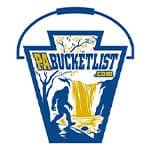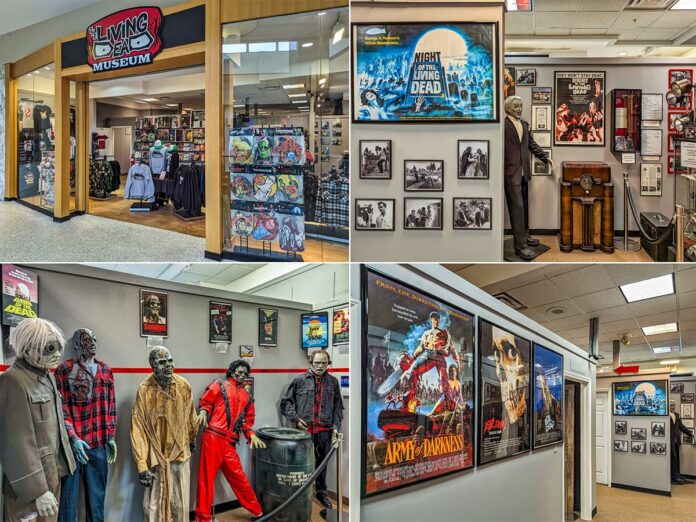
If you’re looking for information about visiting the Living Dead Museum near Pittsburgh, you’re in the right place!
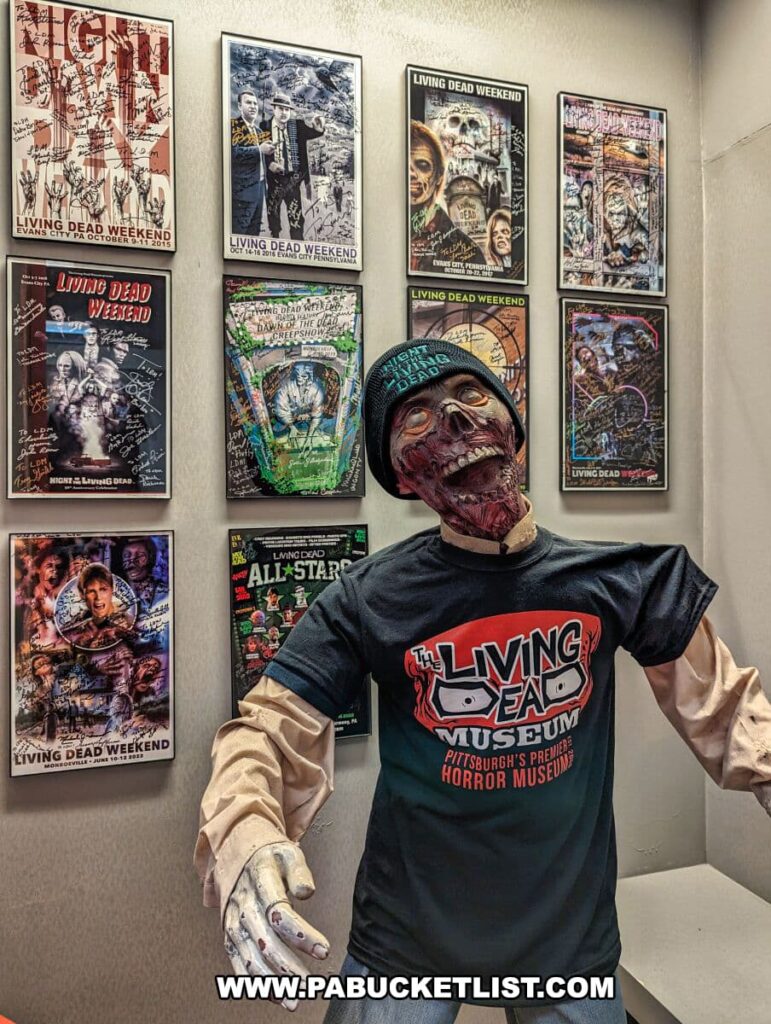
The Living Dead Museum pays tribute to Pittsburgh filmmaker George Romero and the series of zombie movies he created, starting with the horror classic Night of the Living Dead in 1967.
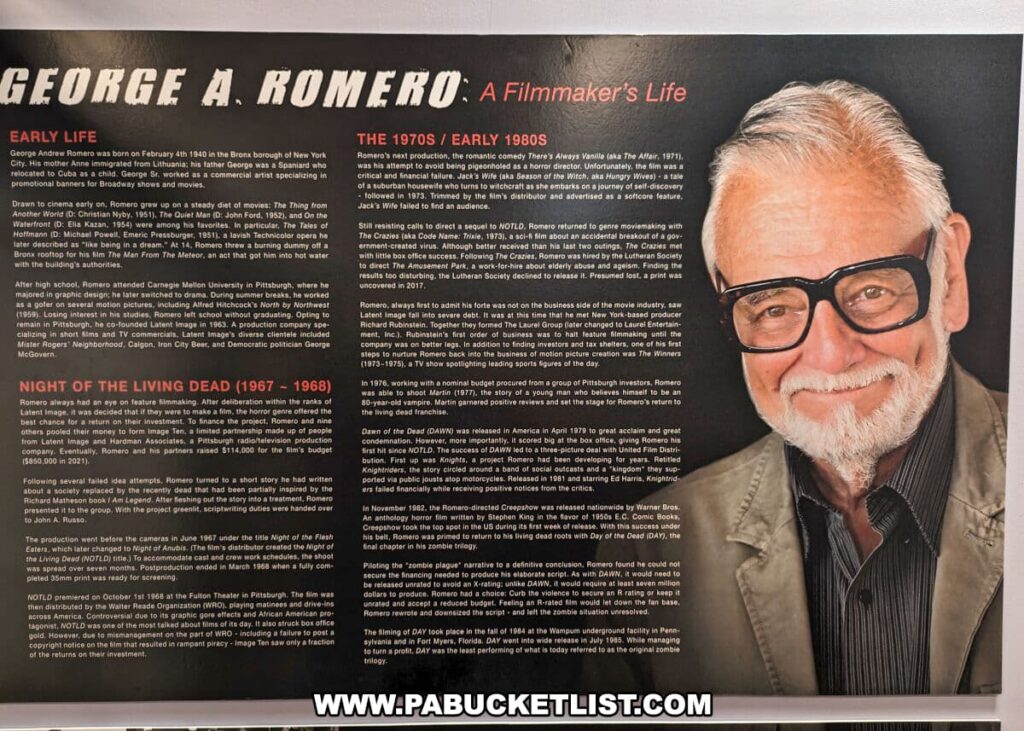
Featuring movie props and memorabilia as well as numerous interpretive exhibits, the museum is not merely a repository of relics, but a journey through the evolution of horror film history itself.
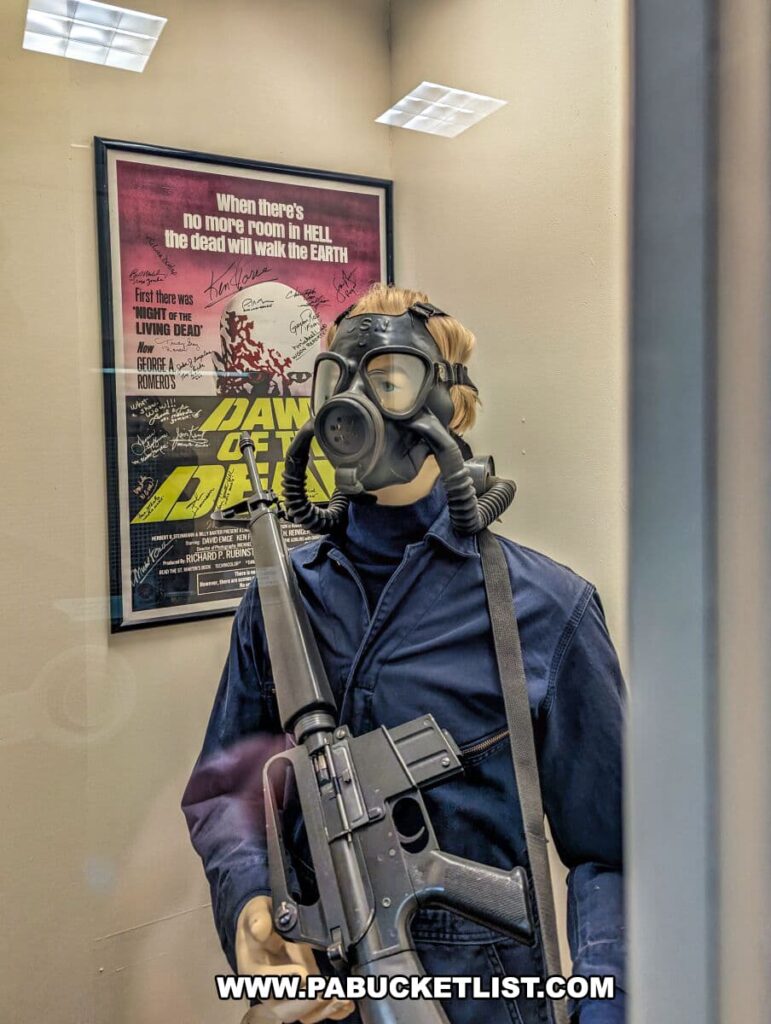
For anyone interested in the history of horror cinema, the art of filmmaking, or the cultural significance of the zombie genre, the Living Dead Museum is a must-see when visiting Pittsburgh.
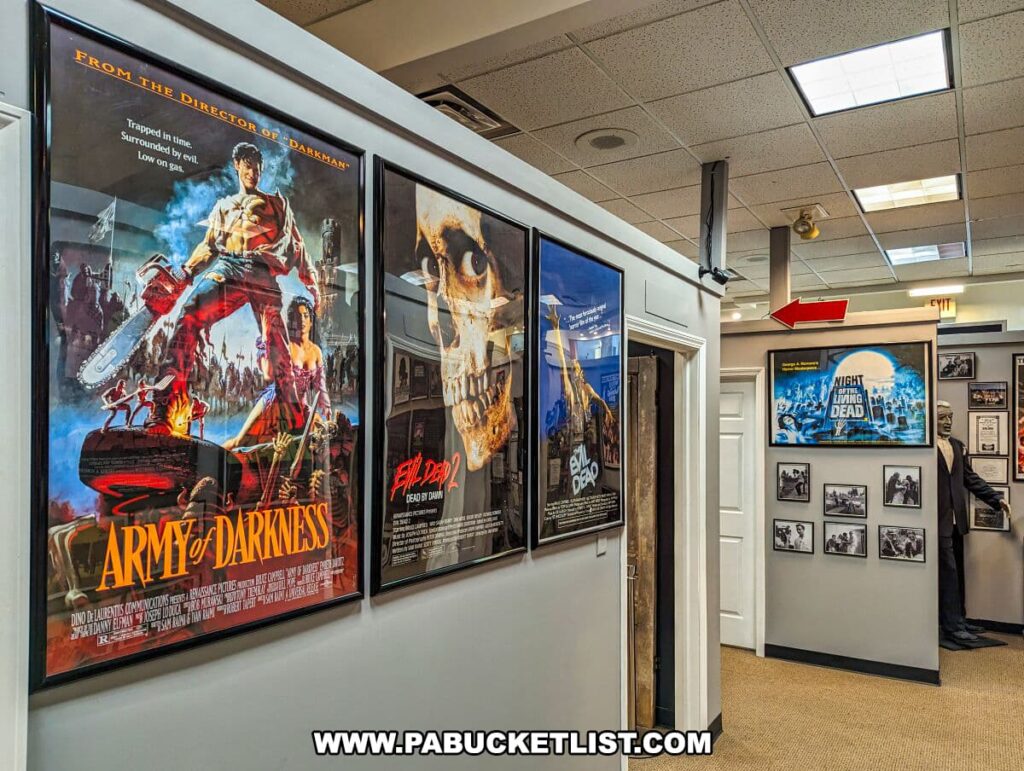
Directions | Hours | Admission Fees
The Living Dead Museum is located in the Monroeville Mall, 12 miles east of downtown Pittsburgh.
Located on the upper level of the mall near the JC Penney, the museum’s location is altogether fitting, in that Romero’s 1978 film “Dawn of the Dead” was filmed in this very mall!
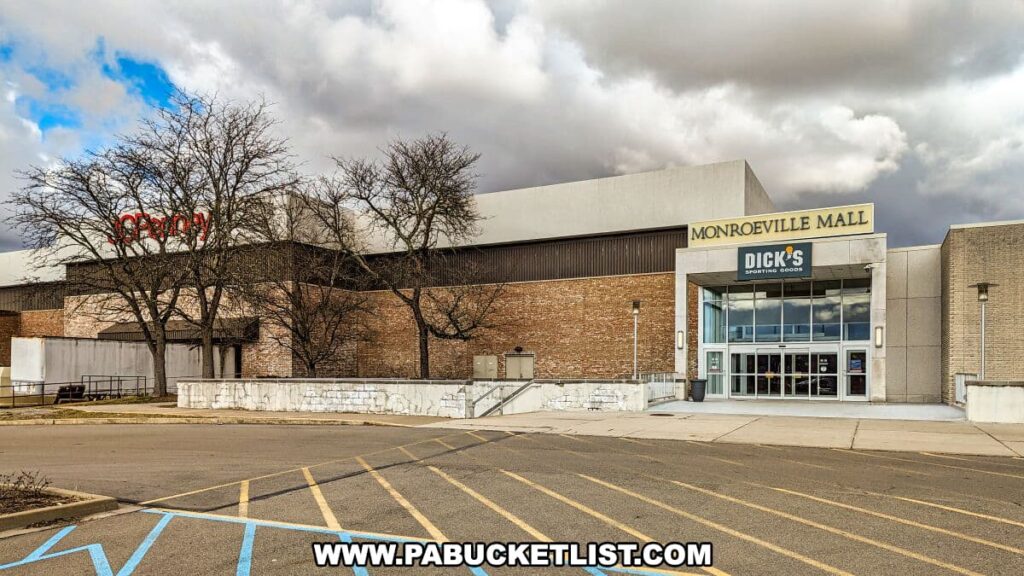
The museum is open on weekends, Friday: 11:00AM to 8:00PM, Saturday: 11:00AM to 8:00PM, Sunday: Noon to 6:00PM (Closed Monday through Thursday.)
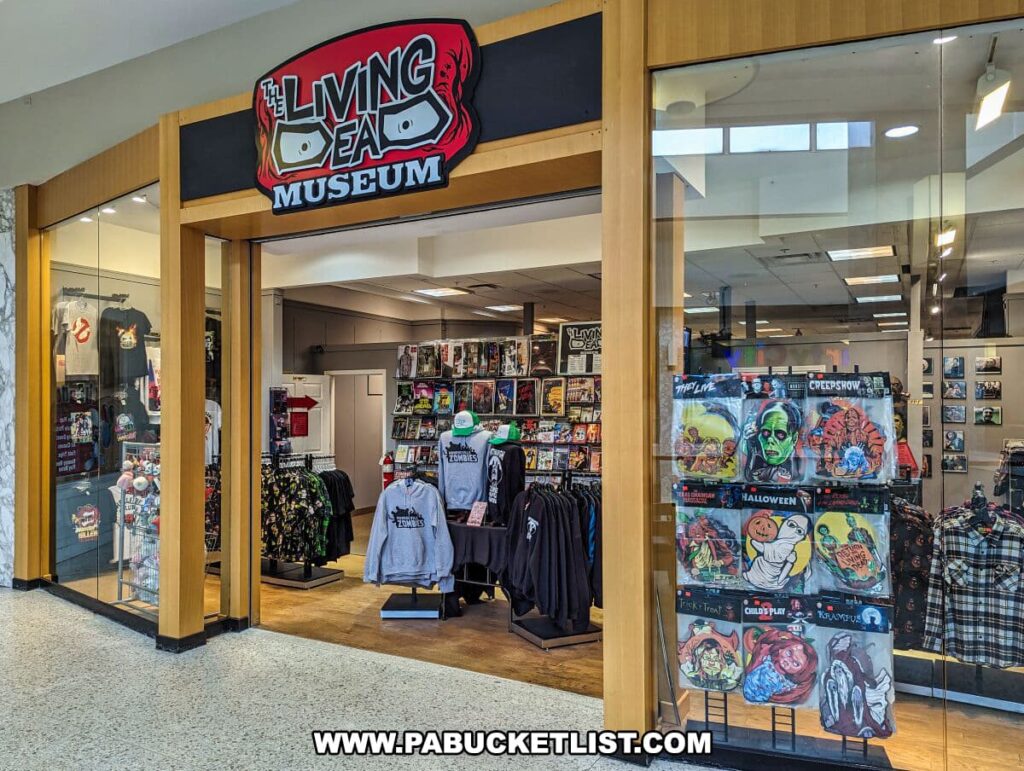
Museum admission fees are: 13 and over – $8.00 | Military – $7.00 | Student – $7.00| 12 and under – Free.
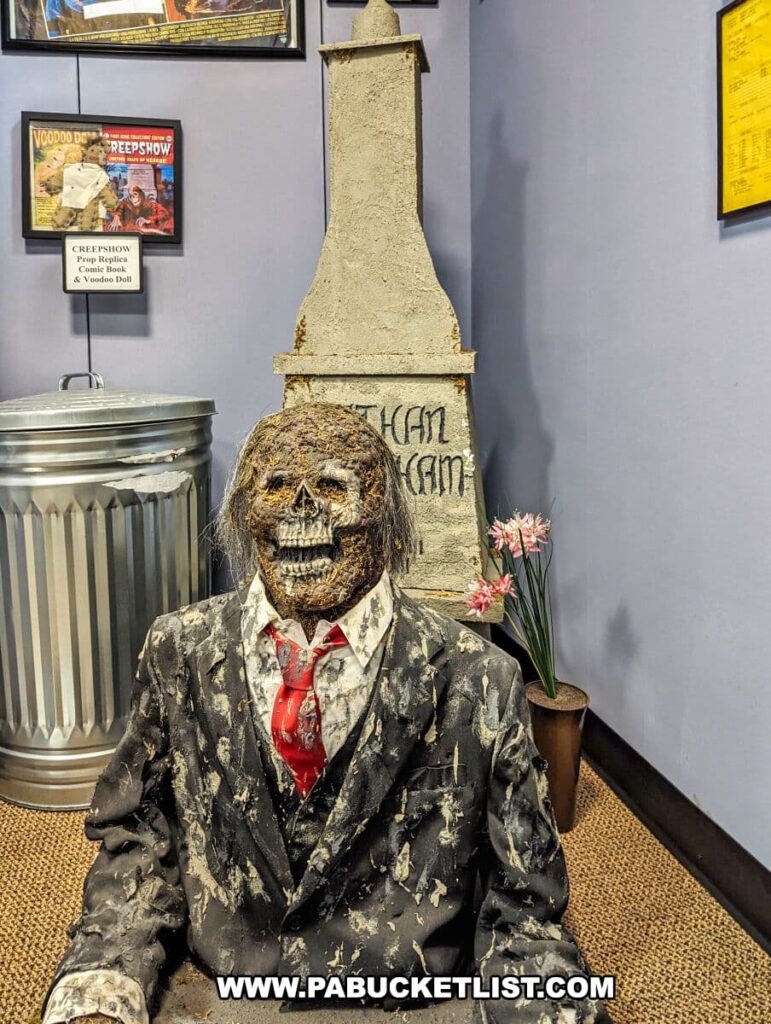
What You’ll See at the Museum
The museum is laid out in chronological fashion, with a sight/sound exhibit about “Night of the Living Dead” kicking things off.
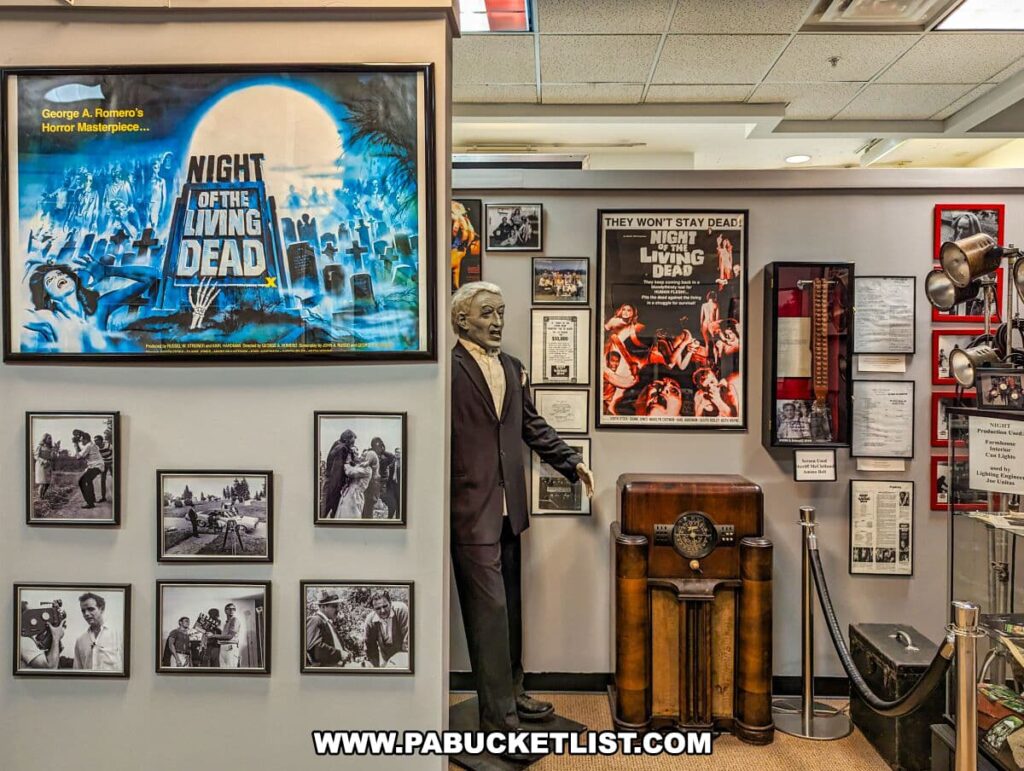
As you proceed down a long corridor with rooms to the left and right, you’ll take a visual journey through both the films that George Romero made, as well as the ones his work inspired.
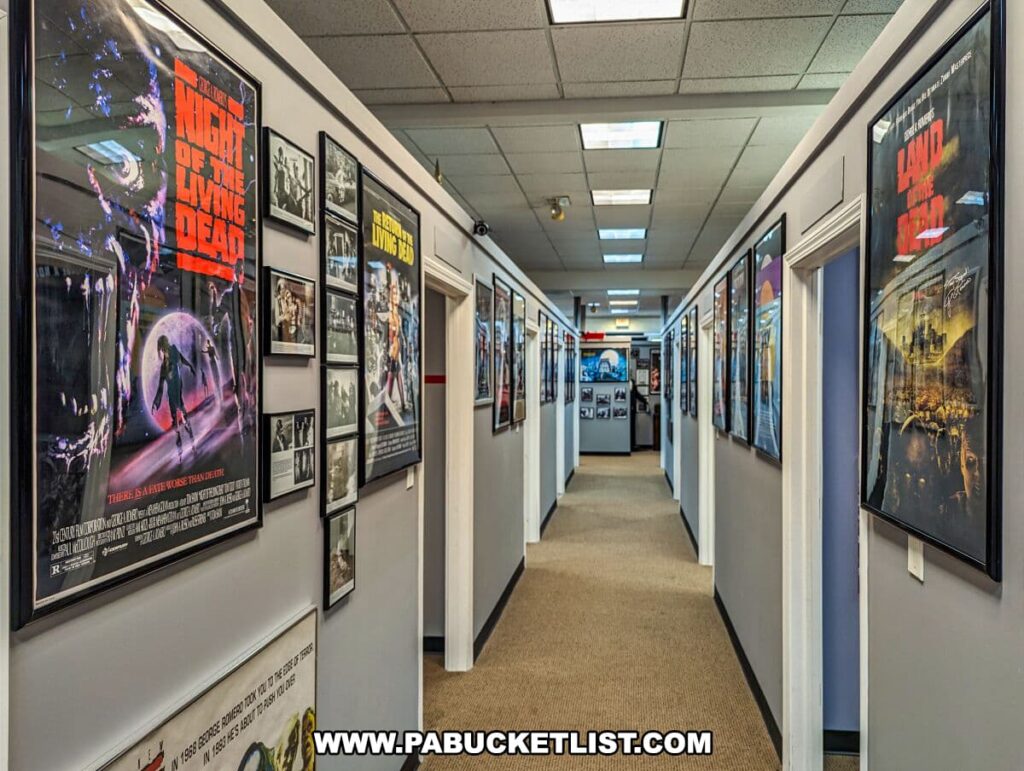
From props to scripts to behind-the-scenes photos, each exhibit is wealth of information for fans of zombie films.
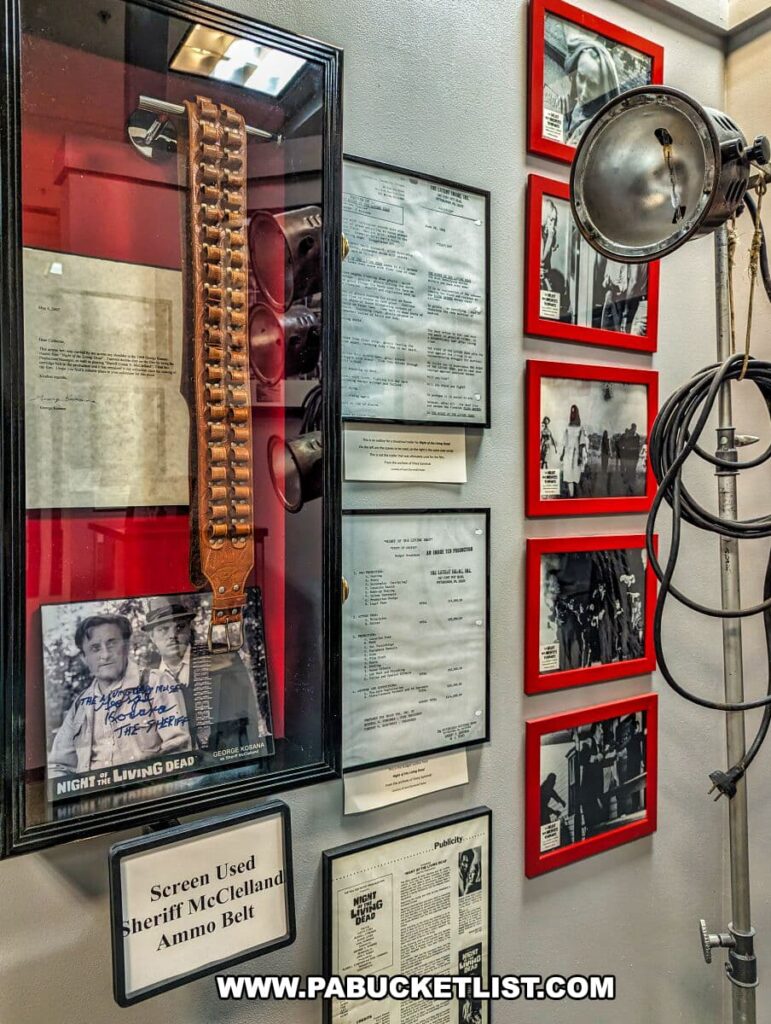
As someone who majored in marketing in college, I found this “Night of the Living Dead” insurance policy promotional gimmick to be pure genius!
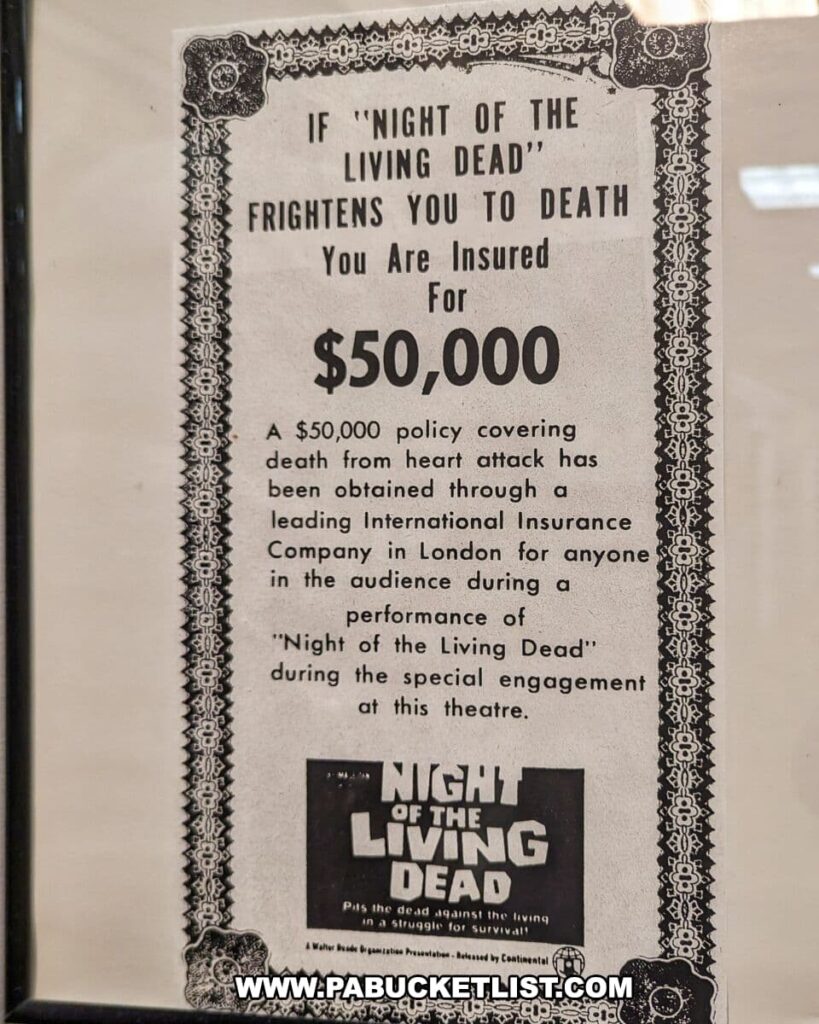
Romero’s 1978 film “Dawn of the Dead” is also thoroughly represented at the museum.
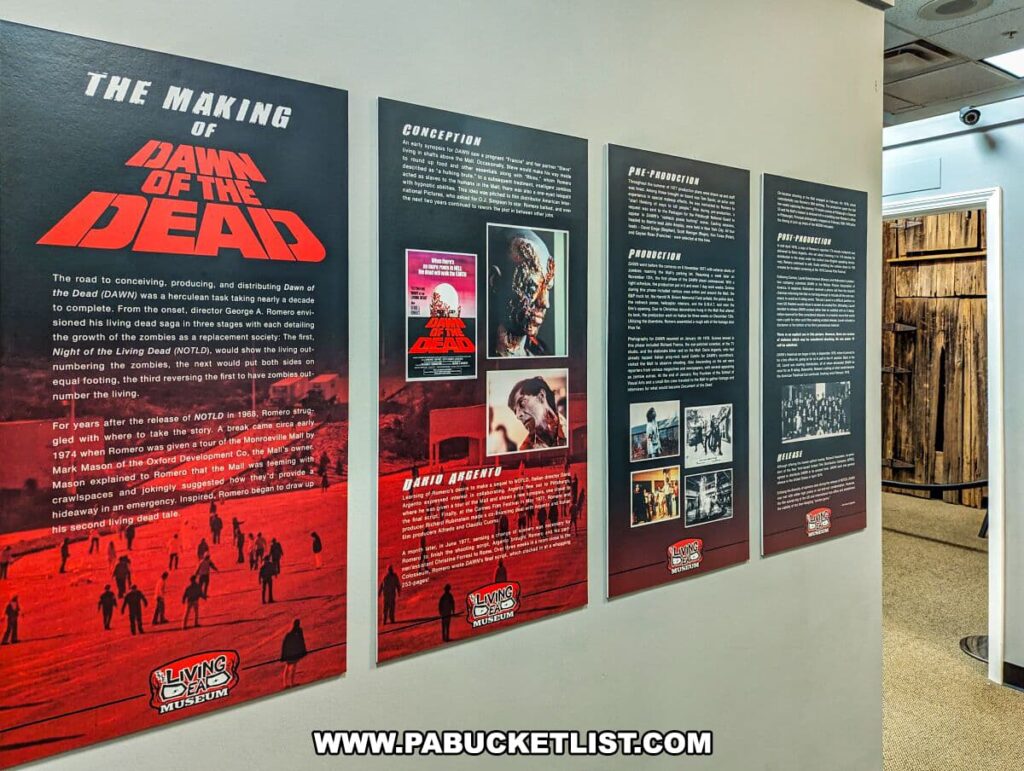
In the plot of that movie, the Monroeville Mall serves as a bastion for four human survivors in a world overrun by the walking dead.
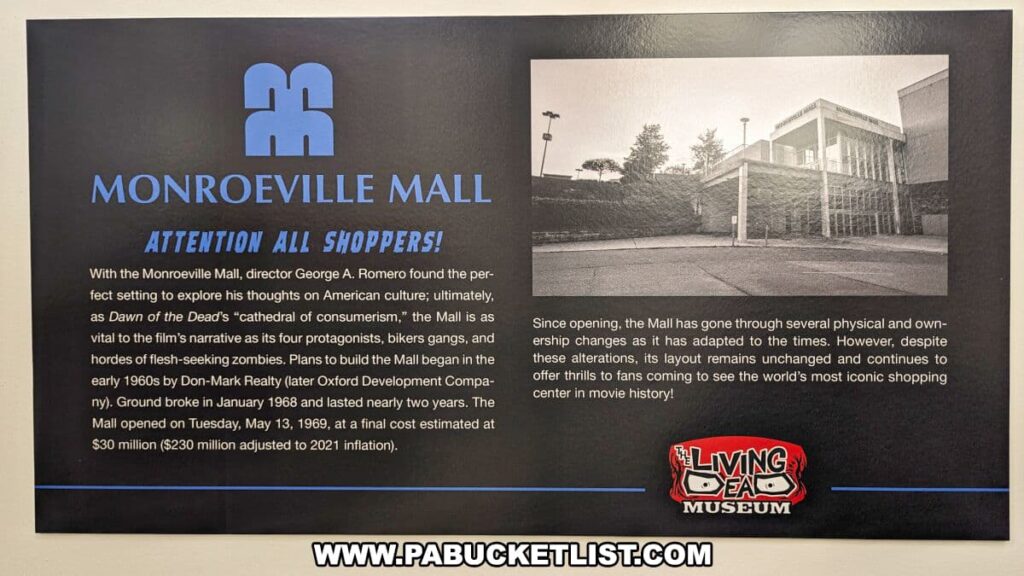
Romero’s 1973’s cult-classic “The Crazies” is featured as well, in which the military struggles to control a synthetic virus that leads to irreversible madness in the infected, as it spreads through a small Pennsylvania town.
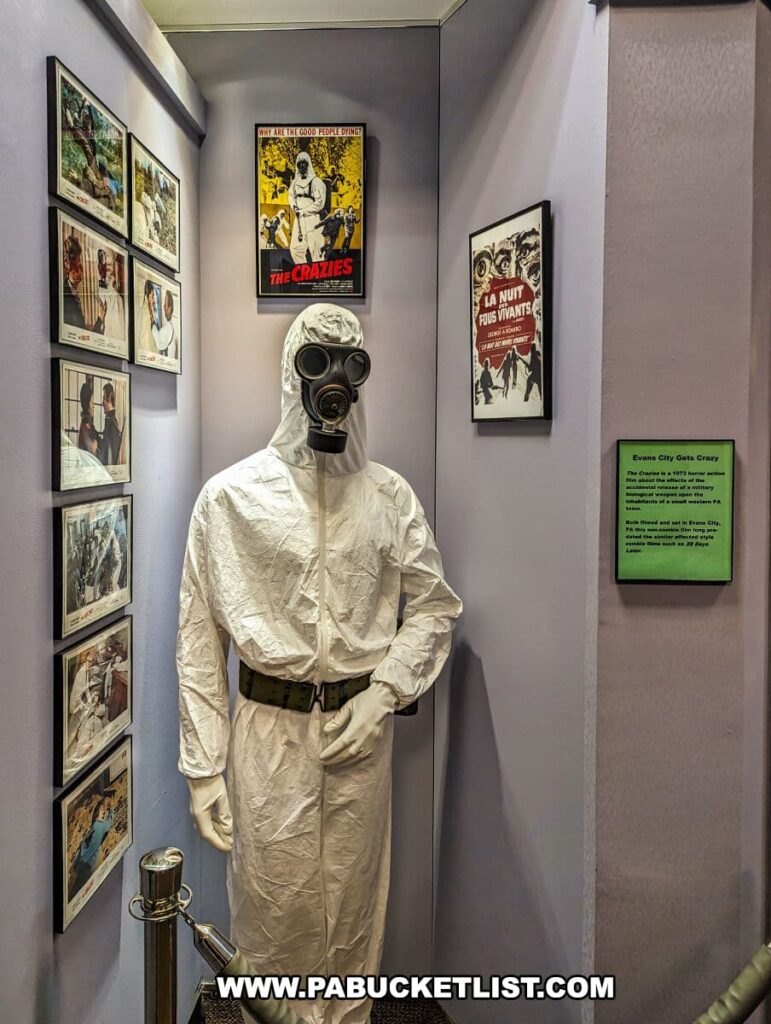
Perhaps my favorite exhibit in the entire museum is the “Timeline of the Living Dead”, where you can trace the evolution of influence “The Night of the Living Dead” has had on pop culture.

Remember when the 1980s brought us the zombie version of Michael Jackson in his “Thriller” video?
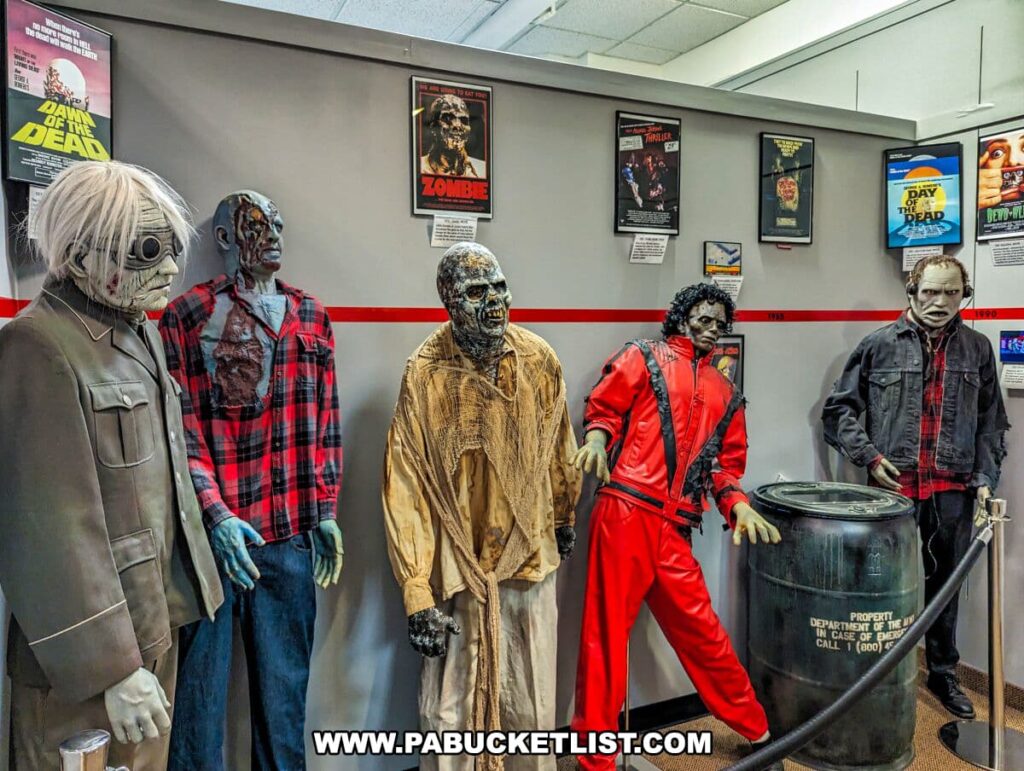
Or the more recent zombie phenomenon which was “The Walking Dead.”
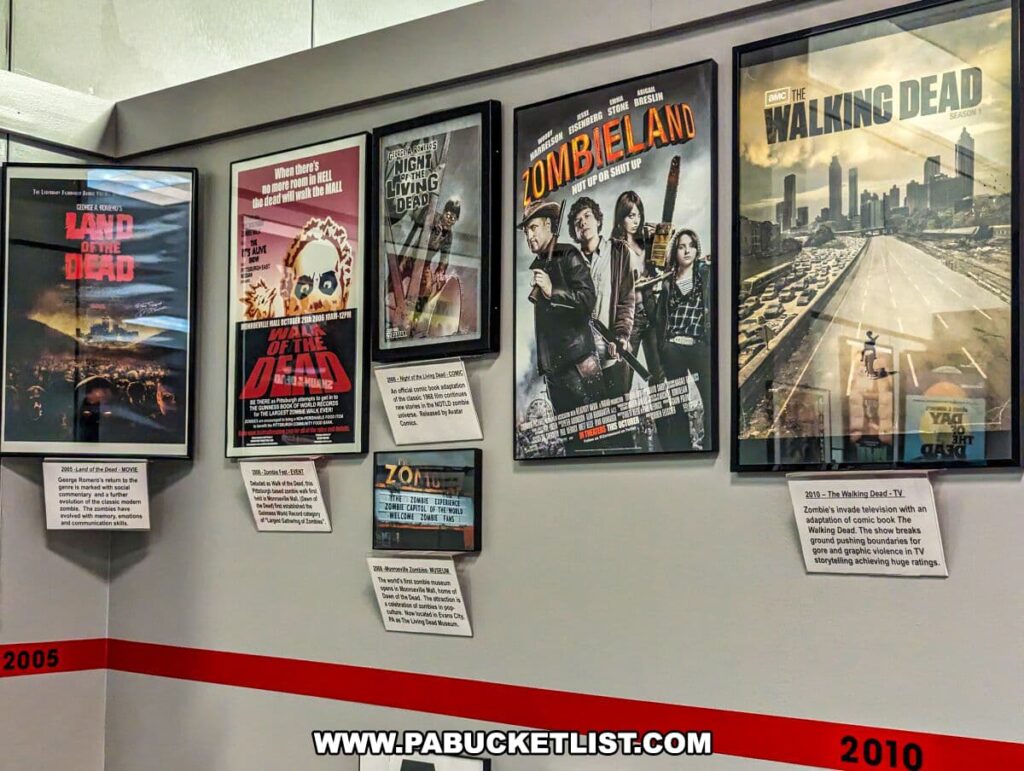
The ‘Maul of Fame’ towards the back of the museum offers a blood-red handprint acknowledgment to the actors, writers, and filmmakers who have contributed to the genre’s lasting appeal.
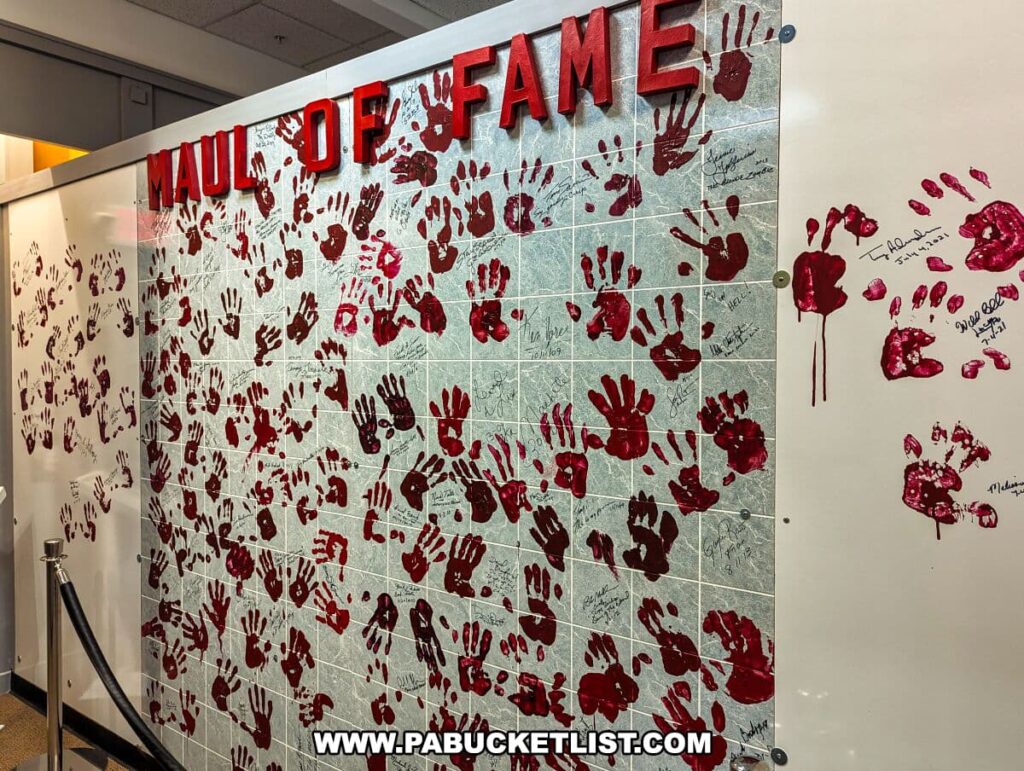
The entire museum is well thought out, with memorabilia clearly labeled as to its origin and significance.
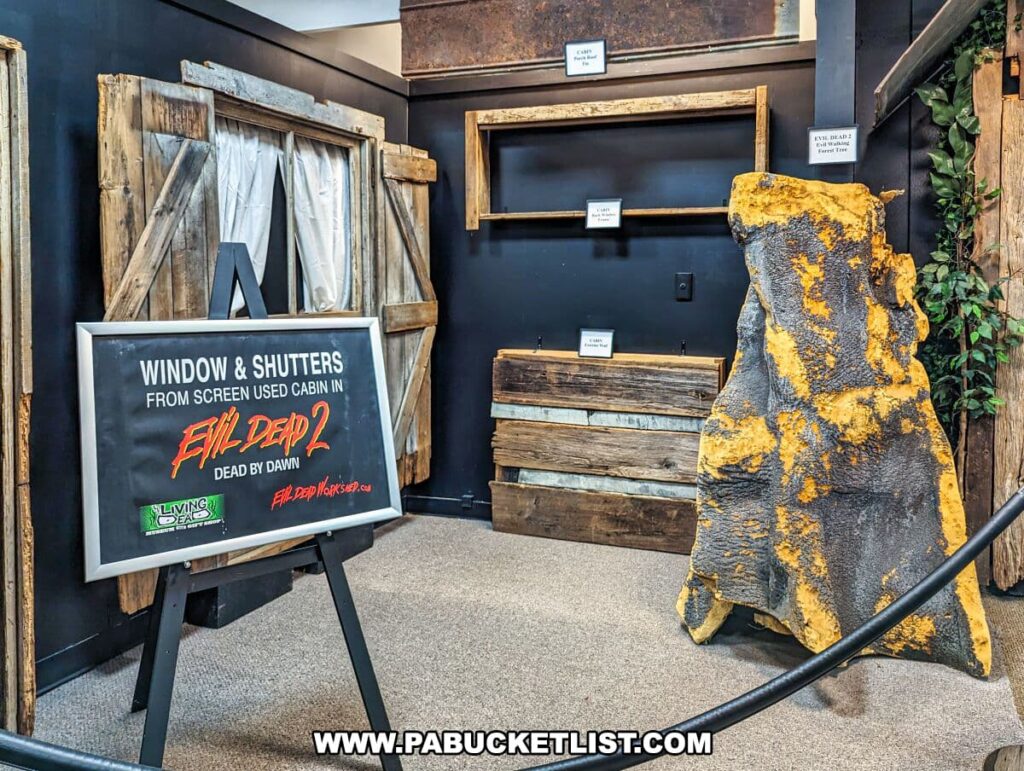
Like any good museum, you enter and exit through the gift shop, which features tons of kitschy zombie-themed swag.
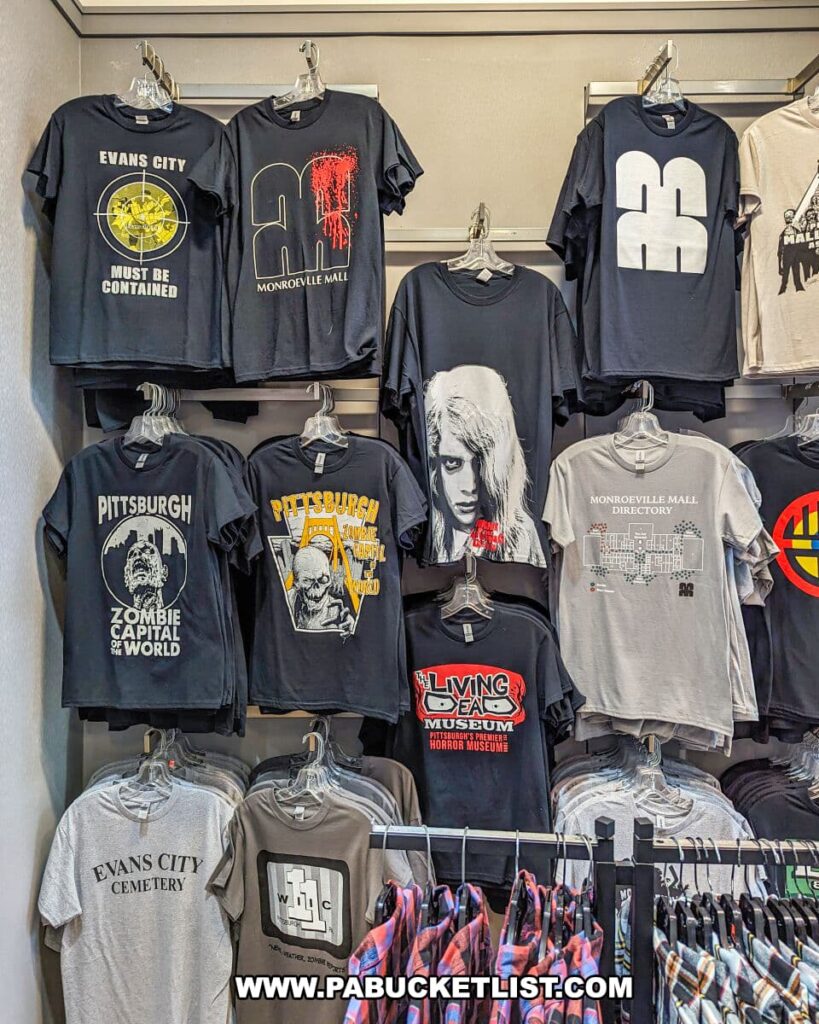
And don’t miss the bust of George Romero on the first level of the mall, directly below the Living Dead Museum.
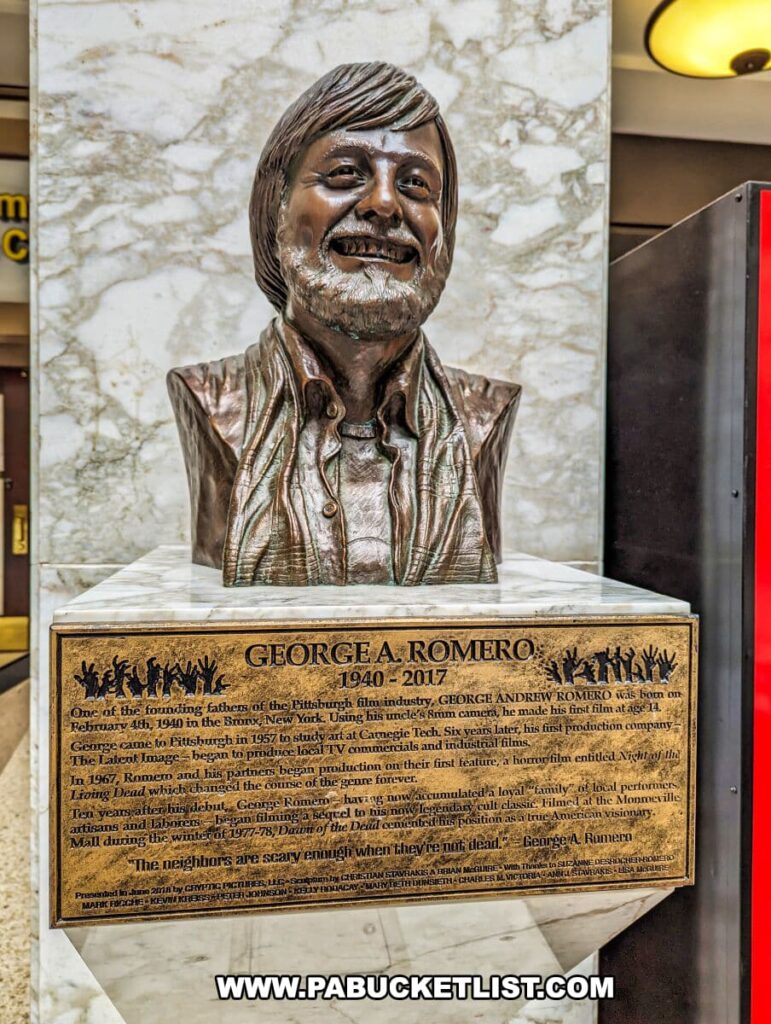
Final Thoughts
The Living Dead Museum is not merely a look back at a film series; it’s a dynamic celebration of a cultural legacy.
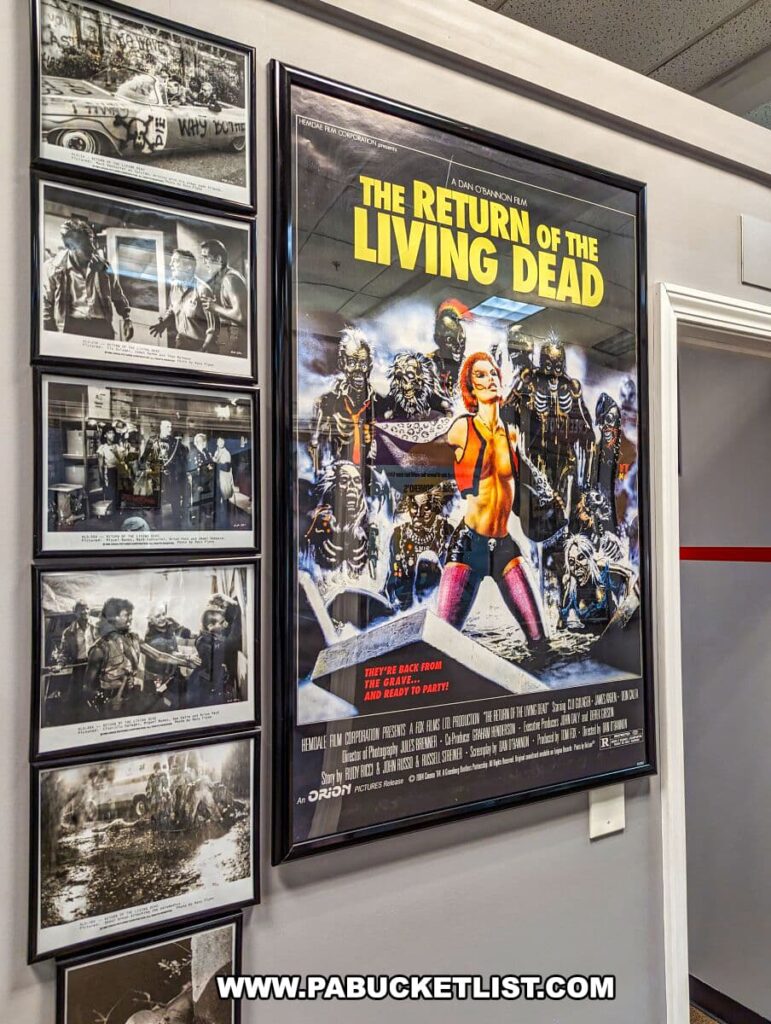
The care taken in preserving and presenting these pieces ensures that the spirit of Romero’s work remains alive and well.
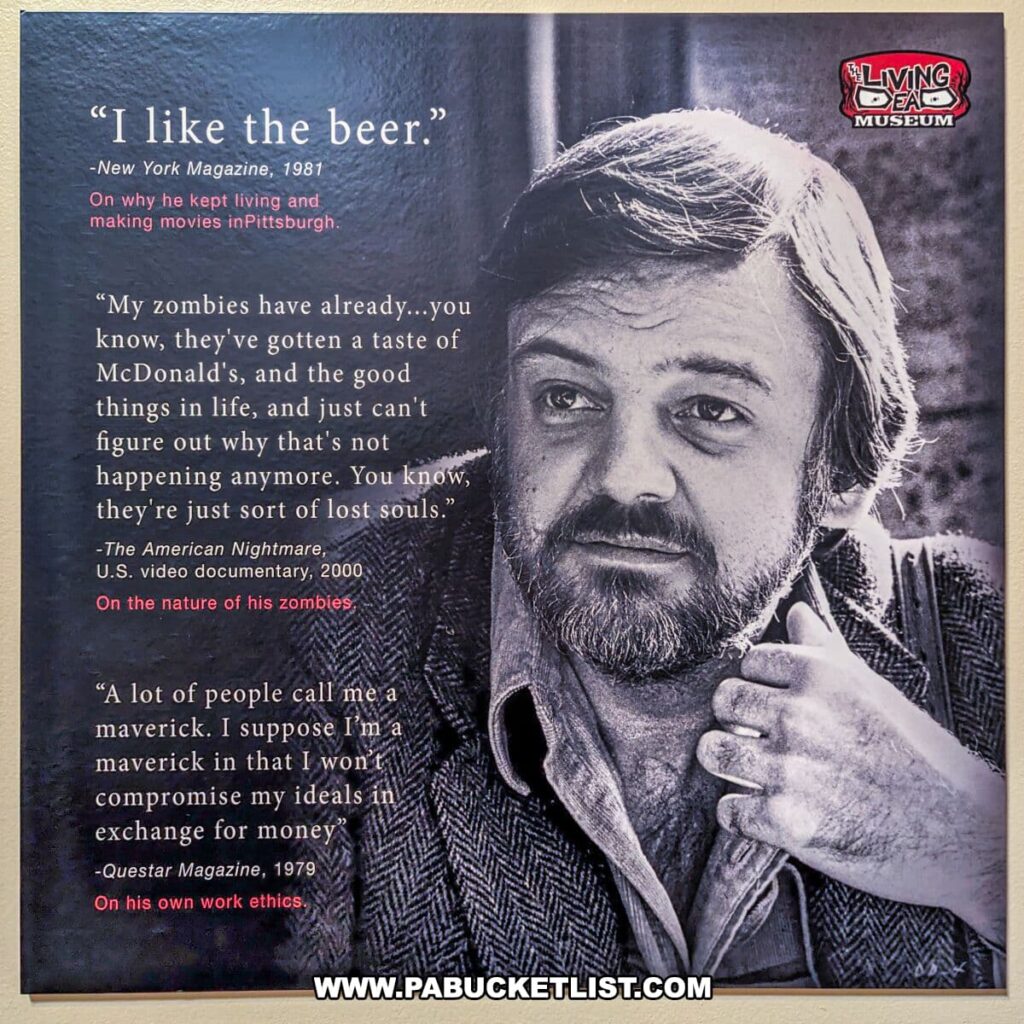
The museum itself is a testament to the director’s visionary storytelling and his impact on the horror genre.
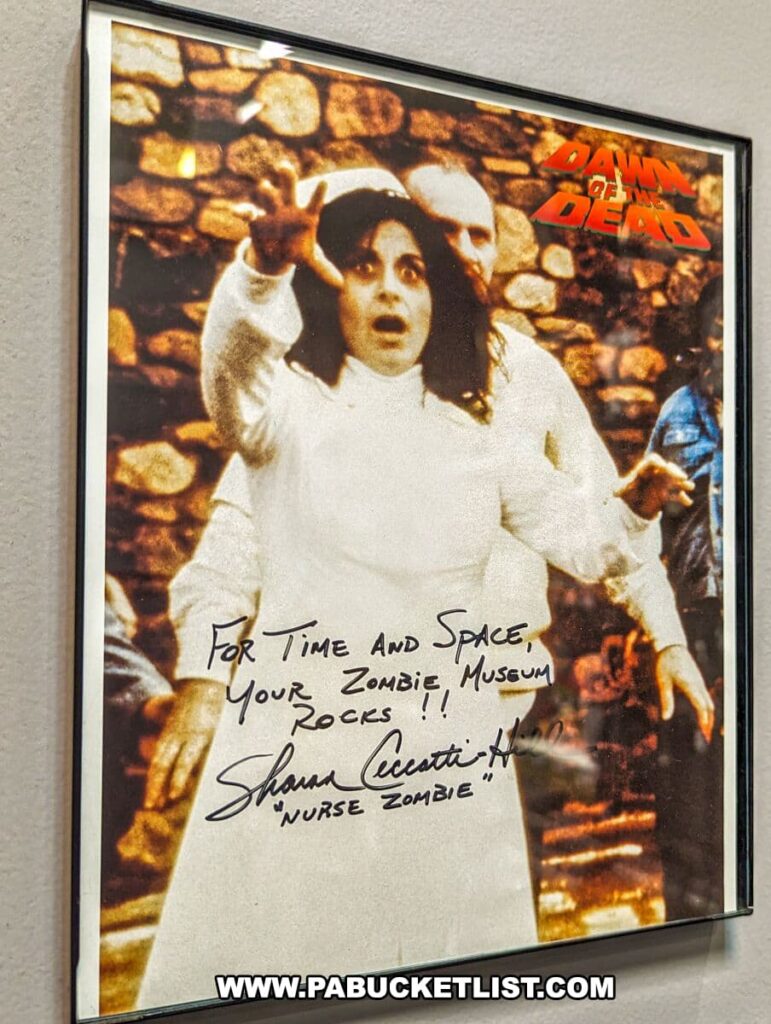
If you’re even a casual fan of the horror films, a trip to the Living Dead Museum is $8.00 well-spent!
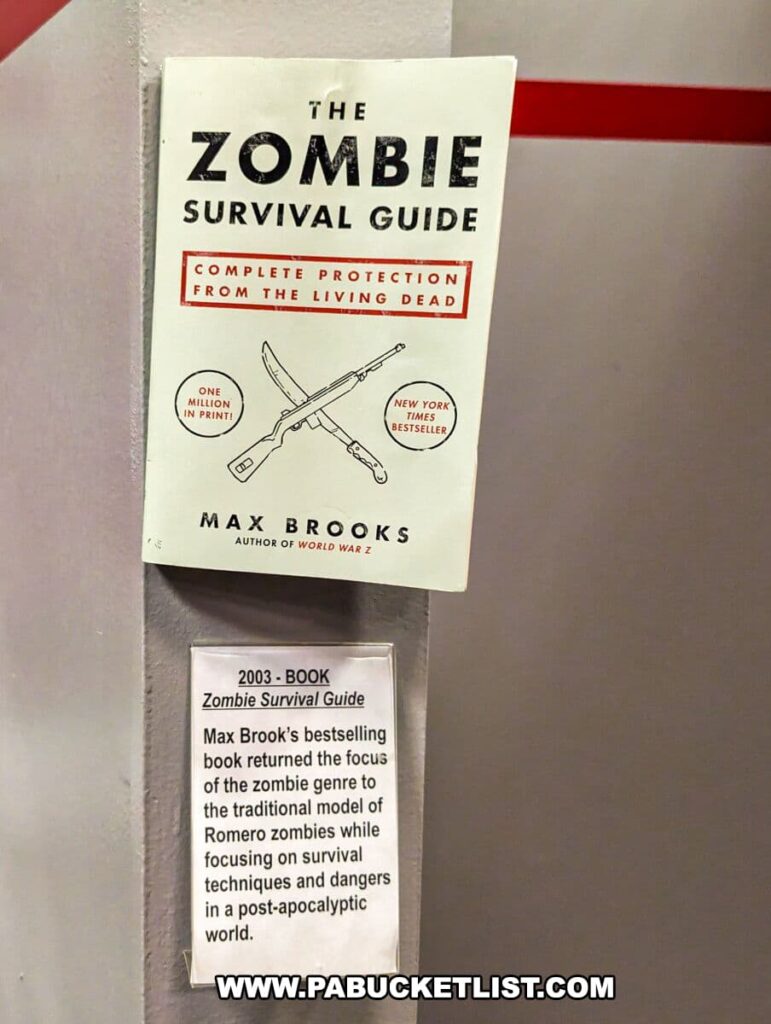
Nearby Attractions
The Heinz History Center in Pittsburgh is the largest history museum in Pennsylvania!
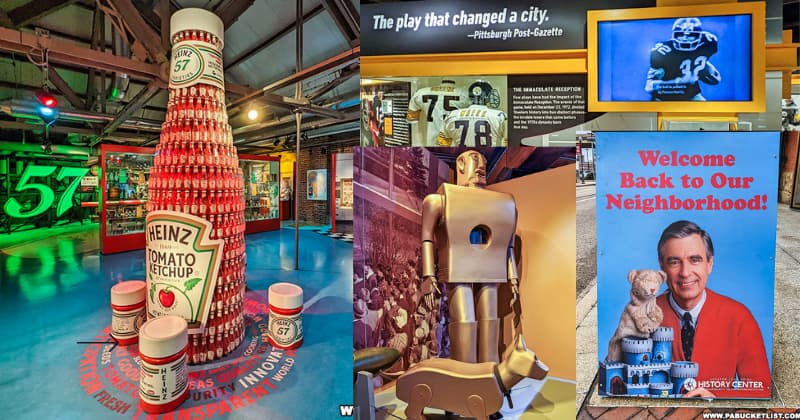
Among the six floors of permanent and changing exhibitions there, you’ll find this one dedicated to George Romero and “Night of the Living Dead.”
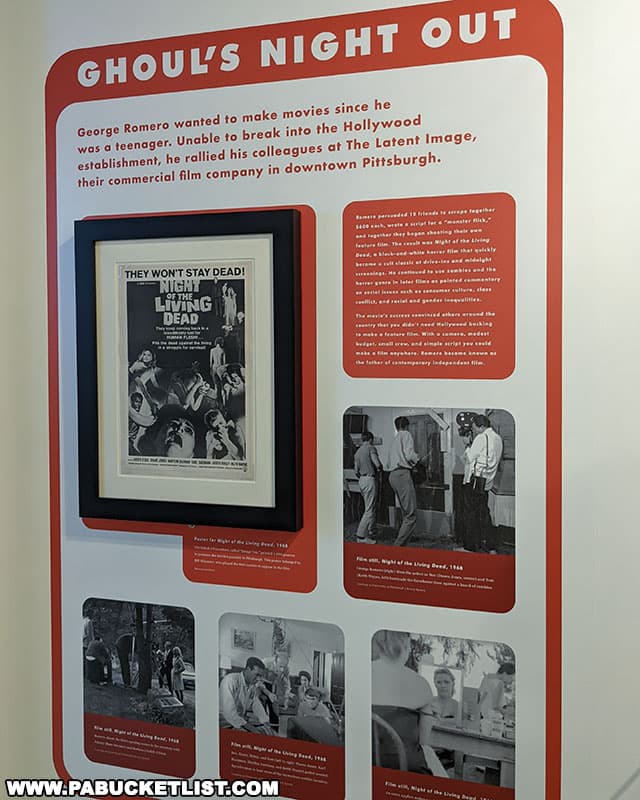
The Carnegie Museums of Art and Natural History in Pittsburgh exhibit everything from ancient relics to timeless art, all under one roof.
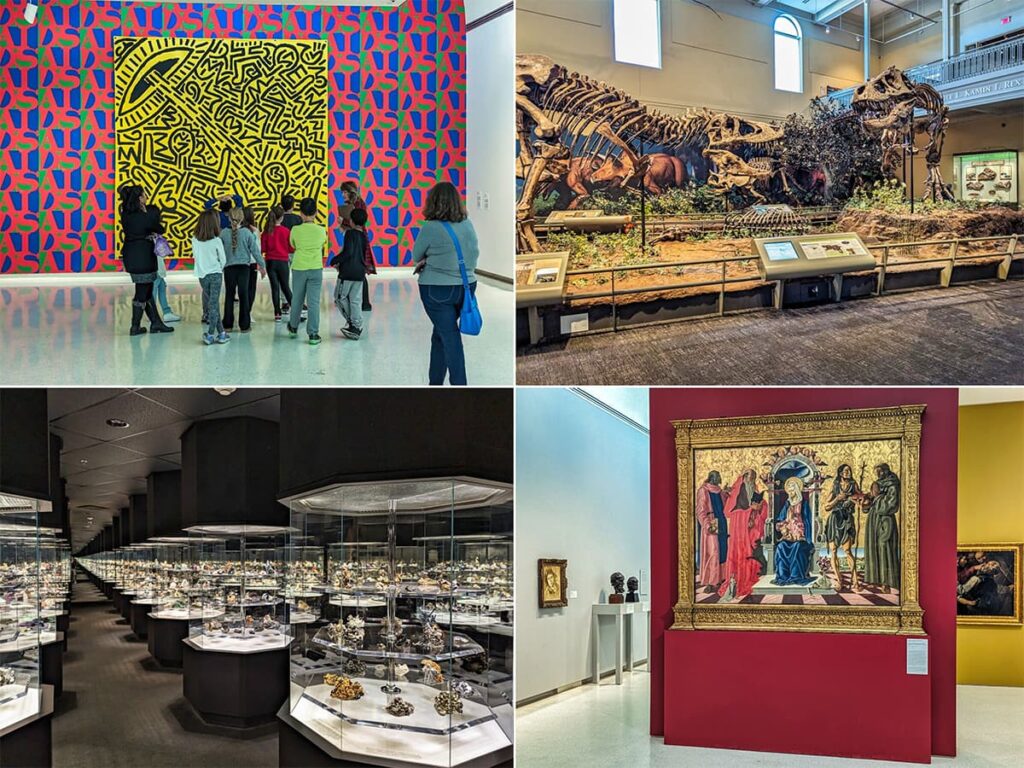
Randyland is an eclectic roadside attraction and mixed-media art installation on Pittsburgh’s North Side that explodes with color and creativity.
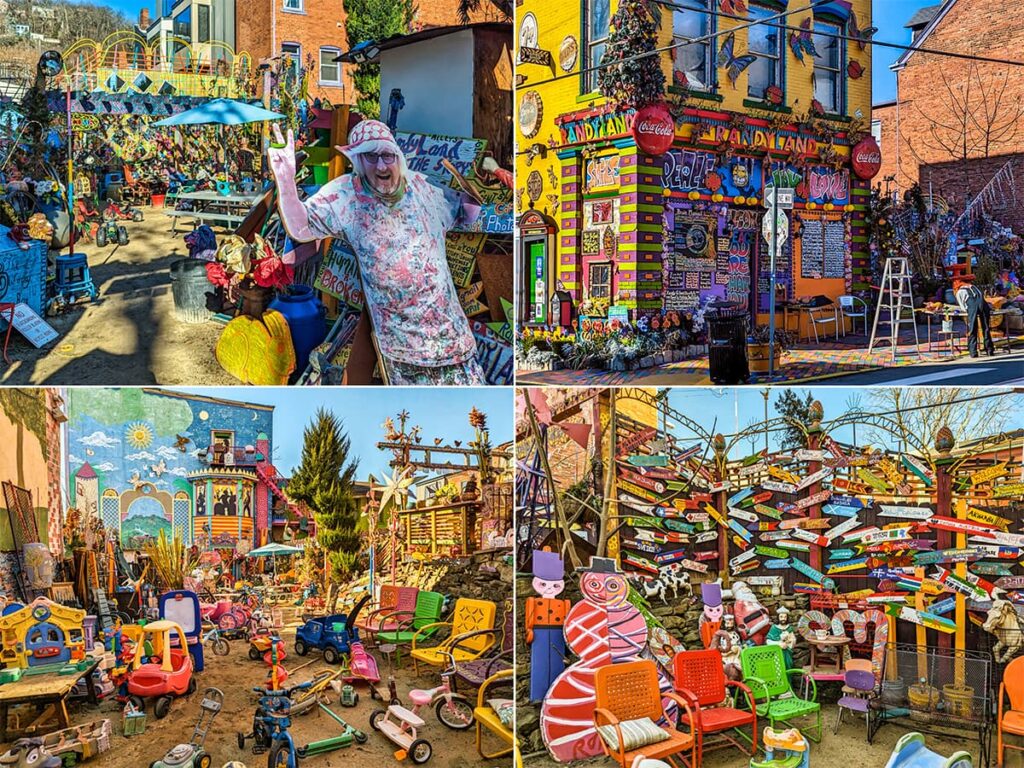
The abandoned Westinghouse Atom Smasher near Pittsburgh is an iconic relic from the dawn of the atomic age in the United States.
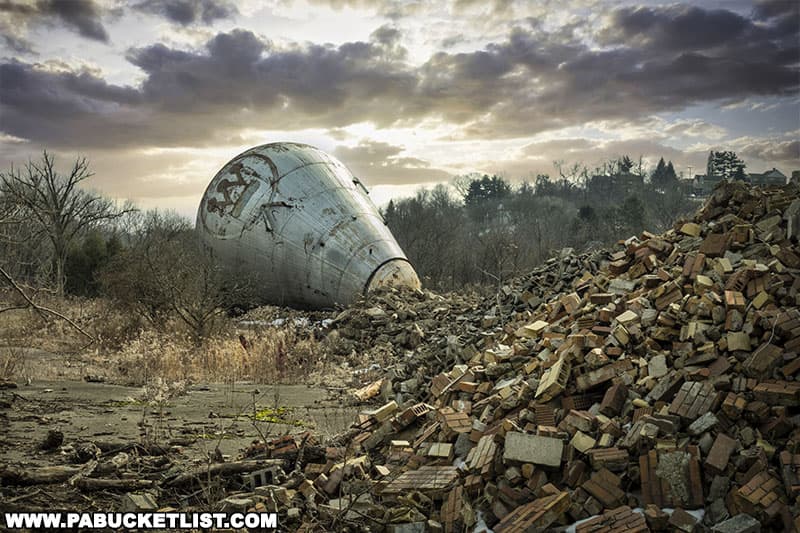
Did you enjoy this article?
If so, be sure to like and follow PA Bucket List on Facebook, Instagram, and/or Pinterest to learn more about the best things to see and do in Pennsylvania!
Click on any of the icons below to get connected to PA Bucket List on social media.


